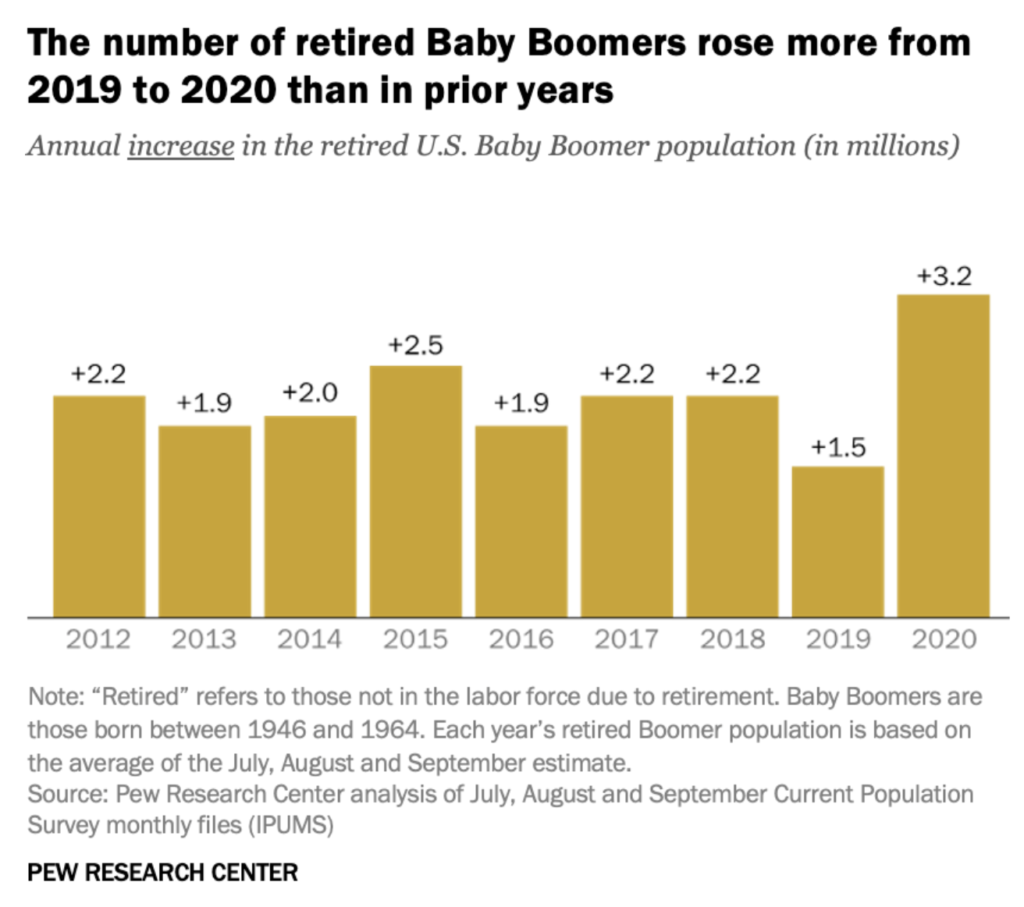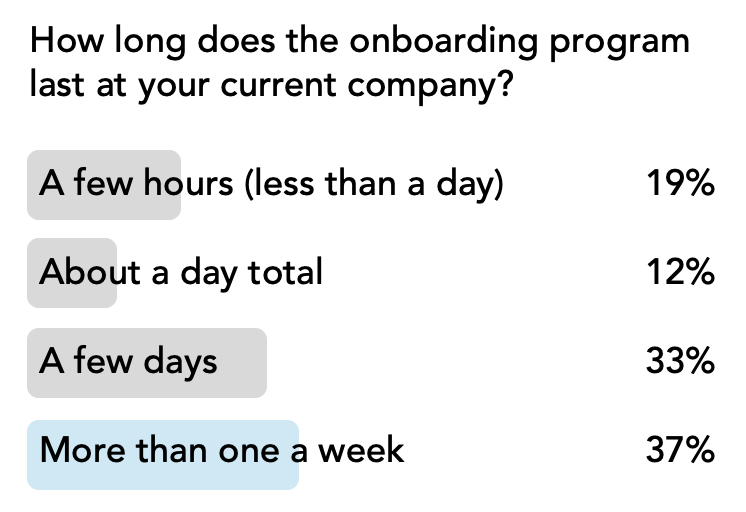Employee turnover is at an all time high
Here are 5 things you can do to fix it.
by Chris Dornfeld
According to the Job Openings and Labor Turnover Survey (JOLTS) report released Tuesday, about 2.9% of the US workforce quit their job in August – the highest level recorded over the past 20 years.
There are numerous articles exploring why this is happening, and in such an acute way. People do not want to return to work at a job that is high risk of Covid exposure, people moved out of cities during the pandemic, people changed careers to something that had a more promising future, people are still living on stimulus funds, the reasons are many and there is most likely some truth to them all.
Looking at trends prior to the pandemic, the US (and most the developed world) was facing a large wave of retirements as baby boomers left the workforce. According to research from the Chicago Fed this rapid decline in participation would peak in 2020 as millions of baby-boomers started to retire. This is compounded by younger people not joining the workforce at the same historical rate as they focus on eduction – a trend starting in 2008.
In 2020 3.2million baby boomers retired from the workforce, a number 113% higher than in 2019 and 60% above the average annual retirement number over the last decade. This is part of a larger trend of a shrinking total labor pool that appears to have accelerated during the pandemic and is driving up employee turnover. Source: Pew Research Center
Digital transformation of our economy is also changing the nature of work faster than we have systems to retrain people. Immigration will most likely face headwinds while the pandemic lingers. All of these factors suggest attracting and retaining skilled employees will be a big problem for the foreseeable future.
The good news is there is a great deal companies can do to reduce the pain of employee turnover. Even small steps can help you keep ahead of the competition.
Five investments companies should make immediately to reduce employee turnover
- Listen to your employees. It’s the most obvious and the most overlooked answer again and again. Collecting feedback and talking with employees on a regular basis not only helps companies identify problems (before they are big problems) but employees can be a great source of ideas to improve their experience. It also gives your employees a greater sense of being valued and having a sense of ownership in the business’ success.
- Update your learning program from an archive of information people don’t use to a microlearning platform that curates engaging content. Almost everyone can access the Internet – the archive of well, everything. What most of us need is not more content but systems to help curate and manage that content.The micro format is also important because it can improve knowledge retention by 20%. Why the focus on learning? Giving people valuable learning opportunities increases their sense of feeling valued, effective and confident – all drivers of better productivity and reducing employee turnover.

Only one in three companies operate an onboarding program that lasts three months or longer, the length suggested by the SHRM. Other surveys show this average to be as low as 11%. Regardless of the exact number, it is clear that most companies check the box for HR, IT or other compliance reasons but fail to design an experience to improve retention and can actually have a negative effect on employee retention.
- Design an onboarding experience, not an orientation. In a recent Whistle survey, 31% of people reported their onboarding was a day or less, and 33% reported a few days. According to the Society of Human Resource Management, an effective onboarding should last 90 days! This might sound like a big investment but companies with effective onboarding have 50% lower employee turnover and 53% more productivity in their first year of employment.
- Continually train your managers. Management training is one of the greatest missed opportunities for most companies. Managers and supervisors have a greater impact on employee retention that any other single factor. When effective manager training and effective onboarding are combined, they can reduce turnover by 68%. Even one tenth of that benefit for most companies would more than justify the investment.
- Assess the risk of not doing these things. The four items above have the potential to produce great value for companies that invest smartly, but part of building the business case is not just the ROI of what is possible, but the risk of doing nothing. Your CFO does not like investing in people programs, they will like loss of market share and bankruptcy even less.

Chris Dornfeld, is the President and Co-founder of Whistle. With a background spanning several start-up companies, global corporations, higher education and government as the CIO for the City of St. Louis – Chris has a unique vantage point on engagement, culture, technology and our changing workexperience.
Whistle is the first learning platform to integrate the key elements that drive business outcomes – ability (microlearning), motivation (micropayments and recognition), cues (AI informed nudges and recommendations) while removing friction (simplified design and mobile centric approach). Together these multiply the impacts of microlearning to maximize the impact on business outcomes.











